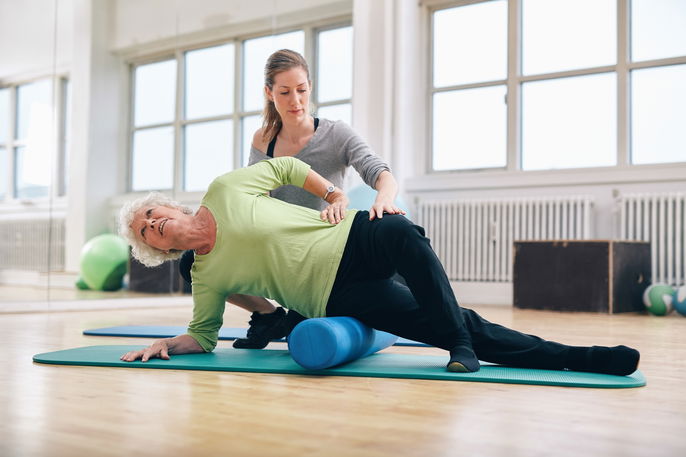Myofascial release is a therapy technique used to relieve muscle pain and tension while promoting overall relaxation. It helps prevent and treat injuries such as bursitis, plantar fasciitis, and repetitive strain injuries.
This technique targets the fascia, a layer of connective tissue that surrounds and supports the muscles. It should be performed by a physical therapist who applies pressure to the muscles, either manually or using specialized tools.
Myofascial release is most often used by people who engage in high-intensity or frequent physical activities, such as weight training, CrossFit, running, or team sports.

Benefits and indications
Myofascial release helps to:
-
Relieve muscle pain and tension, promoting relaxation;
-
Improve mobility and range of motion;
-
Increase blood circulation and oxygen delivery to the muscles.
Additionally, myofascial release can be used to complement medical and physical therapy treatments to help enhance their results, such as injury rehabilitation, postural correction, and strengthening or stretching exercises.
Myofascial release may also help treat conditions like back and neck pain, bursitis, repetitive strain injuries, fibromyalgia, carpal tunnel syndrome, temporomandibular joint (TMJ) dysfunction, and migraines.
Because it improves flexibility and reduces tension, myofascial release can enhance athletic performance, especially in people who participate in high-intensity or frequent physical activities such as weightlifting, CrossFit workouts, athletics, or team sports.
Common techniques
Myofascial release is typically performed by a physical therapist and can be customized based on the affected area and the goals of treatment. The main techniques include:
1. Manual myofascial release
In manual myofascial release, the therapist uses their hands, fingers, elbows, or forearms to apply pressure to the muscles.
First, the therapist identifies areas of tightness or muscle knots. Then, steady and controlled pressure is applied to those points.
During the session, the therapist may use a combination of sliding, kneading, and stretching movements, adjusting the pressure according to each person’s needs and comfort level.
2. Instrument-assisted myofascial release
Instrument-assisted myofascial release involves the use of specialized tools to apply pressure to the muscles. Common instruments include foam rollers, massage balls, massage sticks, or stainless-steel tools with smooth edges.
The therapist glides the tool over the skin or guides the person to position themselves so that their body weight applies pressure to the target area.
The pressure may be held or moved along the direction of the muscle fibers, and the intensity is adjusted based on the person’s tolerance.
3. Self-myofascial release
Self-myofascial release should always be guided by a physical therapist to ensure it is performed correctly and safely.
In this technique, a person uses their own body weight to apply pressure to the muscles, using tools like foam rollers, tennis balls, massage balls, or massage sticks.
The person positions themselves on the tool and performs slow, controlled movements over the target area, maintaining pressure for a few seconds on points of greater tension.
Aftercare and recovery
After a myofascial release session, it’s common to feel lighter and more relaxed. However, mild soreness or muscle tenderness may occur in the treated areas.
This temporary discomfort usually goes away quickly and is a natural response to muscle tension release and postural adjustments.
For the best results, it’s important to keep up with regular sessions as recommended by the physical therapist, who may suggest treatments for several weeks or months depending on each person’s condition.
Also recommended: 10 Mobility Exercises to Reduce Pain & Prevent Injury tuasaude.com/en/mobility-exercises




























